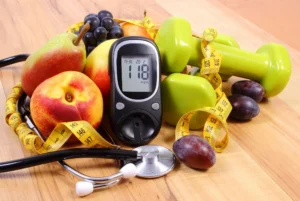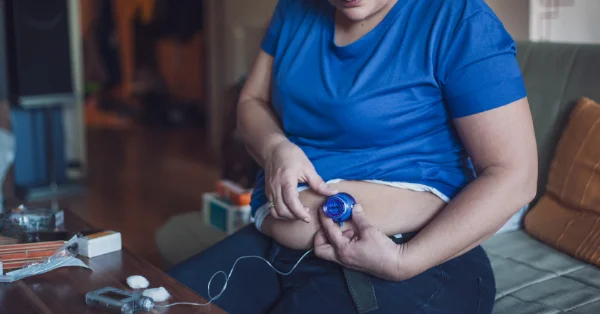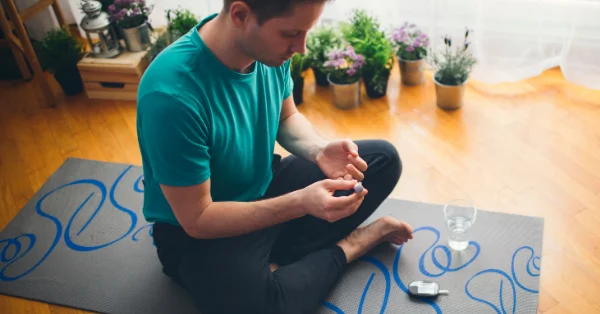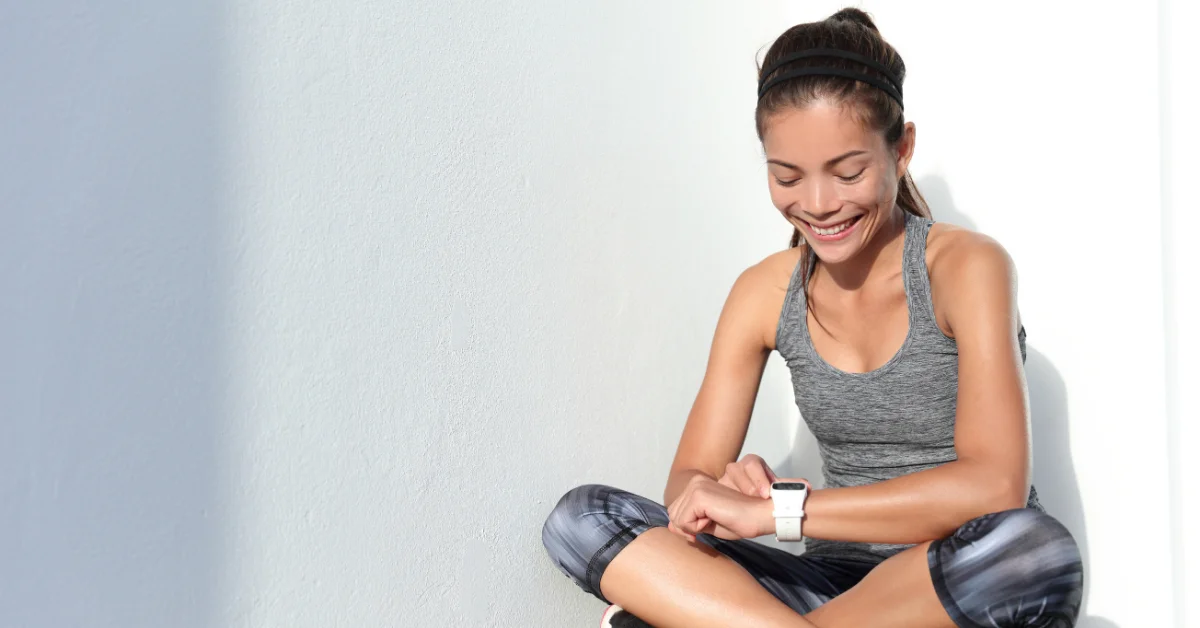Yoga, meditation, deep breathing, and journaling help reduce stress and are beneficial for people with diabetes. We encourage you to implement one or more of these activities into your daily lives for better mental and physical health!
Introduction
Mindfulness allows us to live a more intuitive, present, and happier life. This method can be applied to all areas of our lives and there are many different types of mindful practices. This article will focus on four popular forms of mindfulness: yoga, meditation, deep breathing techniques, and journaling.
It is important to note that mindfulness reduces overall stress. Stress activates the “fight or flight” sympathetic nervous system response when the amygdala in your brain identifies a potential threat. Living in a state of excessive stress can cause us to develop poor mental and physical health. When we practice mindfulness, we can reactivate the parasympathetic nervous system (rest and digest) which brings the body back to its baseline, also known as homeostasis. Over time, mindfulness can decrease the size of the amygdala, and lessen the frequency and severity of the stress response.
Mindfulness is especially beneficial for diabetes management because it can help reduce stress and the resulting negative mental and physical health outcomes. One study found that mindfulness was associated with “significant improvements in diabetes distress, weight, glycaemic control and blood pressure control.” In addition,
mindfulness improves overall mood and helps people with diabetes gain proper coping skills.
Yoga
Yoga is a form of physical activity that practices mindfulness and enables a mind-body connection. Mindful yoga focuses on observing how you feel mentally and physically in your practice and daily life. Yoga can lower blood pressure and heart rate while reducing stress, anxiety, and depression and improves overall mood. This combination of moving and mindfulness is particularly effective for individuals with diabetes because yoga helps with blood glucose control. As a result, yoga can help regulate blood pressure and blood glucose levels. Studies also show that yoga can treat or prevent type 2 diabetes.
If you have exercise clothes and a mat (or even a towel) you can get started anywhere! Try a free yoga class on The Diabetes App (in the resource section on the app) or YouTube and find the level and intensity that works for you. Or check out your local gym or yoga studio for classes. Just like any form of physical activity, it is important to ease into yoga and work your way up. It may feel difficult at first, but over time, your strength and flexibility will improve, and you will notice changes in your physical and mental health!
Meditation
Meditation is a form of mindfulness often done in a sedentary position, most likely sitting, closing your eyes, breathing, and clearing your mind of any thoughts. Paying attention to your breathing will allow you to be present and improve your overall attention and mindfulness. Meditation is attributed to a positive mood which makes us more resilient against stress. Meditation is also great for reducing blood pressure, slowing the heart rate and breathing, and improving the overall immune system. One study divided individuals with coronary artery disease (CAD) into groups of people who meditated, and did not meditate over the course of 6 months. The study found a “decrease in blood sugar and glycosylated hemoglobin levels” in the patients who meditated. This study emphasizes the impact meditation can have on the physical health of people with diabetes by decreasing blood sugar levels.
Getting started is easy! Set a timer for a few minutes, sit in a comfortable position, and clear your mind. You can also follow a guided meditation on YouTube or download a free app.
Deep breathing techniques
Deep breathing is a relaxation technique where you inhale and exhale deeply through your nose or mouth. Many individuals have very shallow breathing, resulting in less air going into the lower part of the lungs leading to tension and anxiety and shortness of breath. Deep breathing lowers stress levels because it allows for full exchange of oxygen in the body and results in a slower heartbeat, less anxiety, distraction from persistent thoughts, and better blood pressure. Studies have shown that this technique lowers blood sugar levels for people living with diabetes. Most successful treatment or management of the disease occurs when deep breathing
exercises are practiced along with regular exercise. Deep breathing exercises should be done regularly to implement a change in blood sugar levels and stress. You can do deep breathing anytime and anywhere! If you can, sit in a quiet spot and inhale deeply through your nose. Your chest should expand, then as you exhale through your nose or mouth, your lower belly should expand. Set a timer and repeat these steps for a few minutes.
Journaling
Journaling is a technique that allows you to write down your thoughts, feelings, and any other experiences going on in your life. In order to reduce stress, an individual can write down what they feel (similar to a therapy session) and come up with remedies to these issues. Journaling helps reduce stress because it allows
you to write down your emotions and analyze them – leading to greater self-awareness and an ability to develop coping mechanisms. People with diabetes often experience increased stress because of their chronic disease. As a result, journaling is a great way to help deal with these emotions. When you get out all of your thoughts and feelings, your stress levels will decrease, and your blood glucose levels will improve.
Grab a pen and notebook or paper. Then write down your emotions, and try to brainstorm solutions to problems you identified. You can also begin a gratitude journal and write down things you are grateful for every day. Try writing for a few minutes each day and then increasing the time.
Conclusion
To conclude, yoga, meditation, deep breathing, and journaling help reduce stress and are beneficial activities for people with diabetes. We encourage you to implement one or more of these practices into your daily lives for better mental and physical health! Habits take time to form, so start with small, manageable steps. Don’t forget that you can begin any of these practices at home and find guided videos online!
Resources:
Mindfulness
- https://www.mindful.org/meditation/mindfulness-getting-started/
- https://zenlemons.com/mindfulness-the-mental-state-of-awareness-and-balance/#mindfulness-exercises-you-can-do-to-relax-and-de-stress
- https://www.ncbi.nlm.nih.gov/pmc/articles/PMC5954593/#:~:text=Mindfulness%2Dba sed%20stress%20reduction%20was,vascular%20resistance%20and%20ventricular %20workload
Yoga
- https://positivepsychology.com/mindfulness-yoga/#mindfulness-yoga https://www.mayoclinic.org/healthy-lifestyle/stress-management/in-depth/yoga/art-20 044733
- https://www.mayoclinic.org/healthy-lifestyle/stress-management/in-depth/yoga/art-20 044733
- https://www.google.com/url?q=https://www.diabetes.co.uk/yoga-and-diabetes.html% 23:~:text%3DBenefits%2520for%2520people%2520with%2520diabetes,effect%252 0on%2520blood%2520glucose%2520control.&sa=D&source=docs&ust=165833548 3308772&usg=AOvVaw3FR3gh2r13zcIWvFNmnPfy
- https://www.verywellfit.com/how-to-get-started-with-yoga-4165462
Meditation
- https://www.mindful.org/how-to-meditate/
- https://www.verywellmind.com/meditation-4157199
- https://www.ncbi.nlm.nih.gov/pmc/articles/PMC5934947/
Deep Breathing Techniques
- https://www.health.harvard.edu/mind-and-mood/relaxation-techniques-breath-control -helps-quell-errant-stress-response
- https://www.ijmrhs.com/medical-research/effects-of-diaphragmatic-breathing-exercis es-on-blood-sugar-levels-in-working-class-females-with-type2-diabetes-mellitus.pdf
Journaling









